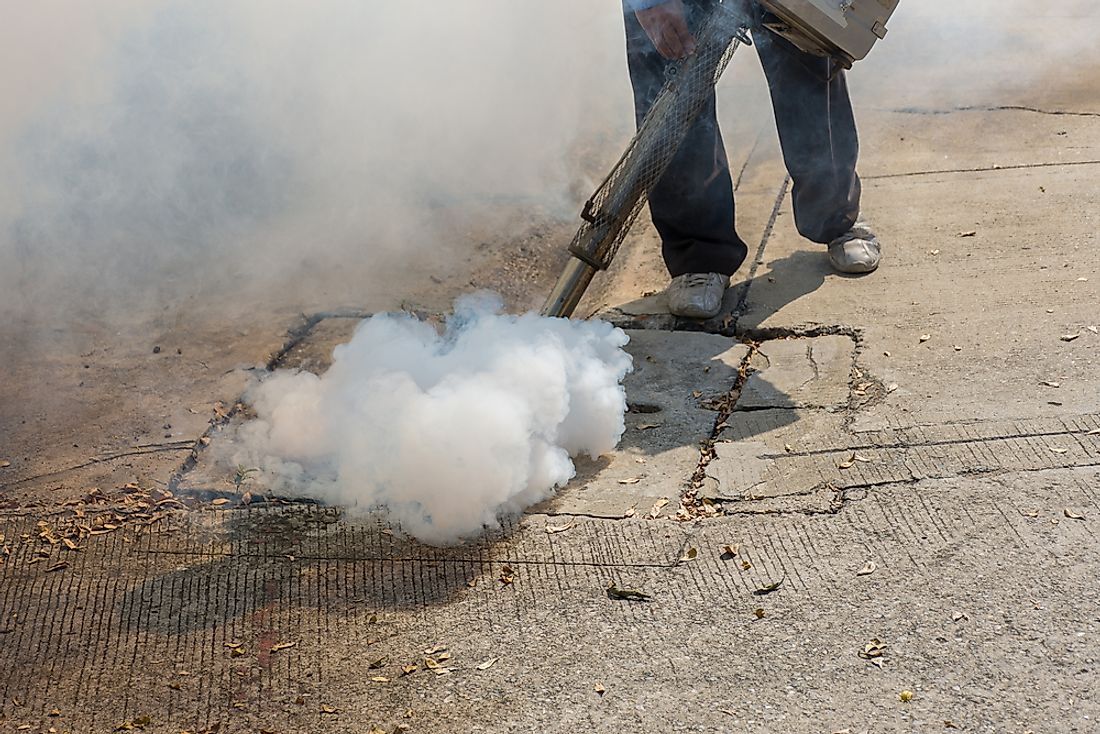Is DDT Still Being Used?

The History Of DDT Use
Dichloro-diphenyl-trichloroethane, popularly referred to as DDT, is an organochlorine that was first synthesized in 1874. It was first used as a pesticide in the 1940s to control mosquitos from spreading malaria among soldiers in the Second World War. DDT was effective in preventing malaria and other insect-borne human diseases. Through its use, the number of soldiers dying from malaria dropped from 400,000 in 1946 to less than 10 in 1950. DDT use was later adopted by the public who used it to control insects in crops, institutions, gardens, homes, and livestock. Due to the massive overuse of the pesticide, insects became resistant. To compensate for the resistance, people used a large amount of the pesticide. By the late 1950s and 1960s, the U.S. Department of Agriculture had begun raising concern over the use of DDT due to the mounting evidence of the insecticide’s ineffectiveness and the increasing environmental and toxicological effects.
Banning DDT
In 1972, the U.S. Environmental Protection Agency (EPA) issued a cancellation order for the pesticide due to the adverse effects it had on humans and wildlife, realizations that were brought to light by a book called Silent Spring by marine biologist Rachel Carson. Researchers also believed that there was a relationship between the pesticide and human reproduction after they discovered that it led to the development of liver tumors in animals. It began to come to light that DDT was a carcinogen.
In the decades since its ban in the US, the concentration of DDT in the environment has declined. However, much residue remains. After the product had been banned in the US, other nations particularly Hungary, Norway, Sweden and West Germany banned it from agricultural use. The UK banned the product in 1984 and by 1991, more than 26 countries had placed a total ban on the product. In 2004, the Stockholm Convention on Persistent Organic Pollutants restricted the use of DDT. 170 countries ratified the convention.
Is DDT Still Being Used?
Although the pesticide was banned in many countries, some countries in Africa, Asia, and South America needed the pesticide for mosquito control in order to reduce the risk of malaria. In 2006, WHO supported the indoor use of DDT in African countries where malaria remained a major challenge. The organization stated that the benefits of the pesticides to African countries outweighed the adverse effects it had on the environment. India and North Korea have continued the use of the pesticides for agricultural use despite the ban. Approximately 4,000 tons of DDT are produced annually for the vector control program. It is legal to manufacture DDT in the US, though it can only be exported for use in foreign nations. DDT can only be used in the US for public health emergencies, such as controlling vector disease. Today, DDT is manufactured in North Korea, India, and China. India remains the largest consumer of the product for vector control and agricultural use. China produces 4,500 metric tons of the product of which 80–90% is used to produce Dicofol, an acaricide. African countries do not use the product for agricultural purposes but countries such as Ethiopia, South Africa, Uganda, and Swaziland use it to control malaria.











